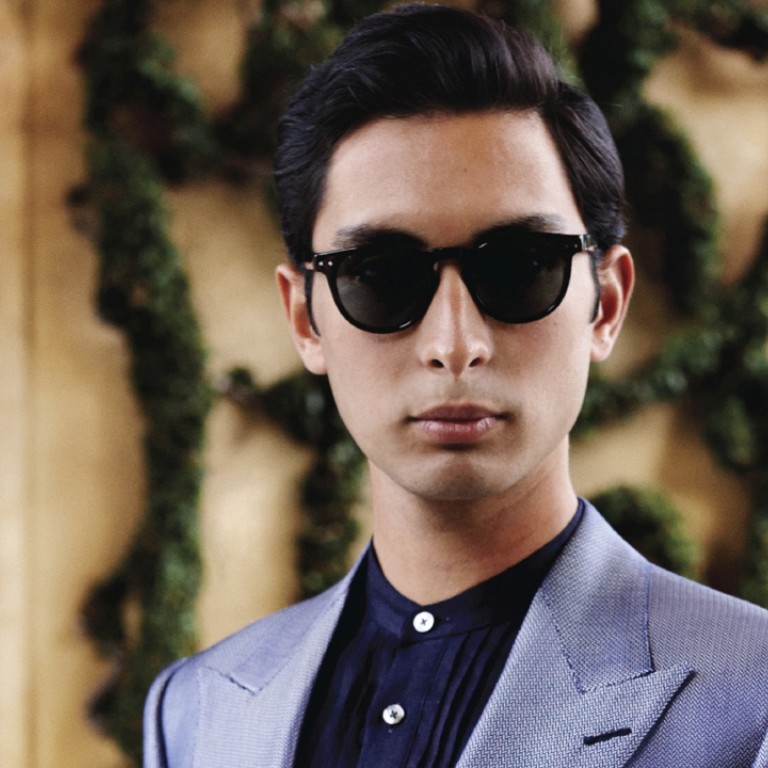
How etiquette coaches teach China’s power men the finer points of fashion
As they go out into the world (and buy it up), Chinese clients, and their wives, want to learn more about the colour and cut of men’s suits, hairstyles, and accessories, and pick up social skills
Over the next few weeks the streets of London, Milan and Paris will be filled with fashion’s peacocks strutting the pavements in their tailored finery and catching the lenses of street style photographers as they move between menswear shows.
This is modern men’s fashion: loud and flashy, elegantly dandified, or just a wacky mash-up of styles devised to attract attention. It is menswear at its extreme, rather than a role model for the way to dress in the usual spheres of international business.
But for many, sartorially inclined but not willing to don a mustard fedora for the office, where do they turn for fashion forward inspiration and dos and don’ts?
If it’s not the catwalks you’re turning to for guidance then where do you find help to navigate the maze of intricate dress codes and the etiquette of style and manners for the corporate environment, especially if you’ve spent the first 20 years of your life in jeans and T-shirts?
The catwalks might provide the trends, colour palette and silhouette; however, to understand the subtle nuances of dress for the business boardroom there are specialists who can provide that knowledge and steer you through the finer points of dressing appropriately. In Asia’s growing economies, where more demands are being made of business men in global settings, fashion etiquette goes far.
For those who want something beyond the pages of GQ, such expertise is shared as part of etiquette courses provided by authorities on these matters such as Debrett’s and Quintessentially Lifestyle who, on request, will cover style and image in their programmes.

“We offer a bespoke service, looking at the various angles of etiquette, and cover dress codes, personal style and the finishing touches,” says James Field, the training manager at Debrett’s in London. “This includes colour theory, the cut of a suit – quite subtle things, but all details to lift one’s game.” Debrett’s is well placed to offer such guidance; once the go-to “social network” bible of 18th-century British society, it has evolved into a trusted guide on etiquette and perfect manners.
Dress features in courses run in London, Hong Kong and China. These have a particularly enthusiastic following among 25- to 35-year-old Chinese men, who learn about the cut of a suit, the shape of a collar to complement one’s face and the weight of the fabric that would be comfortable in London or the summer humidity of China. Field used to work in Savile Row, so he guides students through the dress codes of The Season, from Ascot, to Wimbledon and Henley and the whole hospitality wagon that Chinese clients are interested in, as well as the soft skills such as dining etiquette and small talk.

It is largely those aged from their mid-40s to 60 that seek Quintessentially’s advice because the younger generation has already been exposed to foreign culture and Western influences while being educated abroad, Lai says. Now their fathers want to look professional and classy in both tailoring and leisure wear for social occasions.
They learn about clothing, hairstyles, accessories, watches, but Lai says it is not just the way they dress, “they are also getting more conscious of the way they speak; their manners and social skills like how to host a dinner or cocktail party. Last but not least they will also try hard to learn English to look more educated, rather than rely on a translator”.
Often men turn to their wives for advice, which is why Sara Jane Ho, founder of Institute Sarita introduced a module on men’s dress to her etiquette courses in Beijing and Shanghai. Eighty per cent of her clientele are hostesses, married women in their 30s and 40s brushing up on Western etiquette. One day “a hostess asked me what is the best suit, Armani or Zegna, because she wanted to give her husband some tips. So I created a course in menswear appreciation”, says Ho. The wives learn about a well-fitting shirt, suit, what kind of socks and how to tie a bow tie. “Black tie, white tie, cocktail [dress codes], all these things have only entered China in the past five to seven years and it still feels quite foreign to them.”
It is clearly about building clients’ confidence in the international environment. Field at Debrett’s, for instance, will show a client how to display a bit of personality in their dress rather than hiding behind a black suit and tie, simply by adding some colour in the shirt and tie. Noni Ware, fashion director at Quintessentially Lifestyle in Hong Kong, sometimes takes men shopping for a new, more inspired wardrobe. “The dress codes for men have definitely become more relaxed in the workplace, but still for most professions there is a requirement to look well-put-together.”


